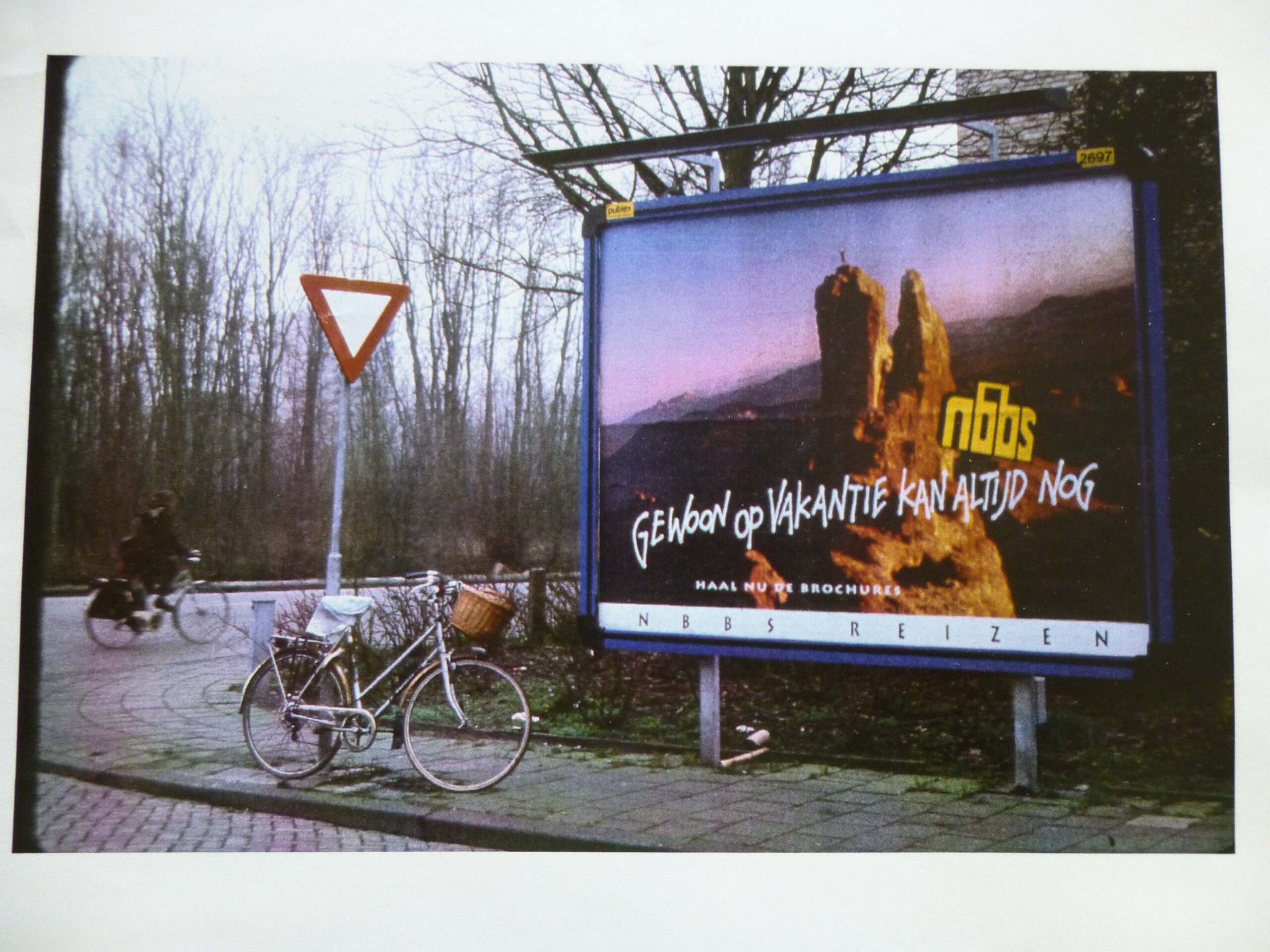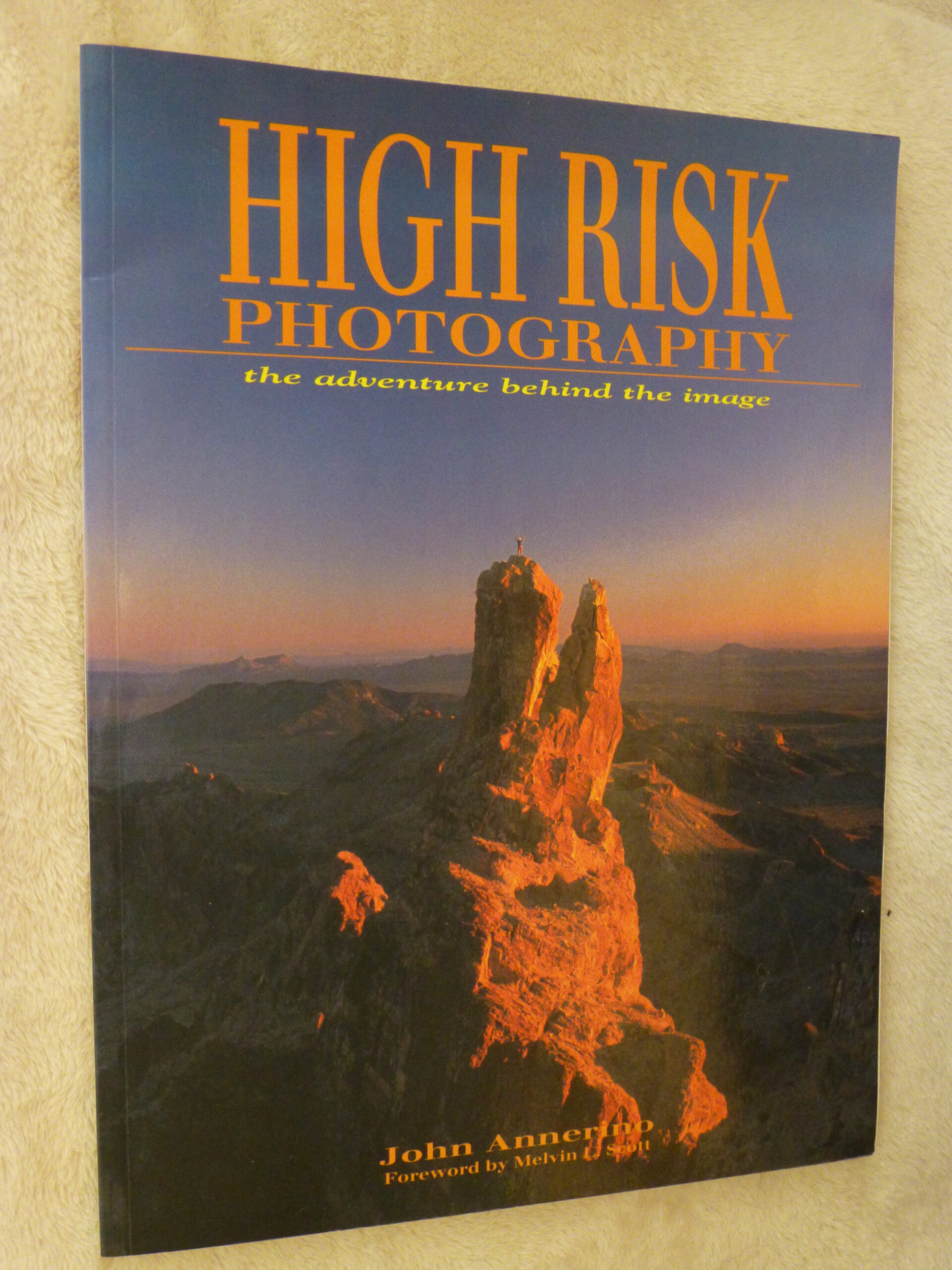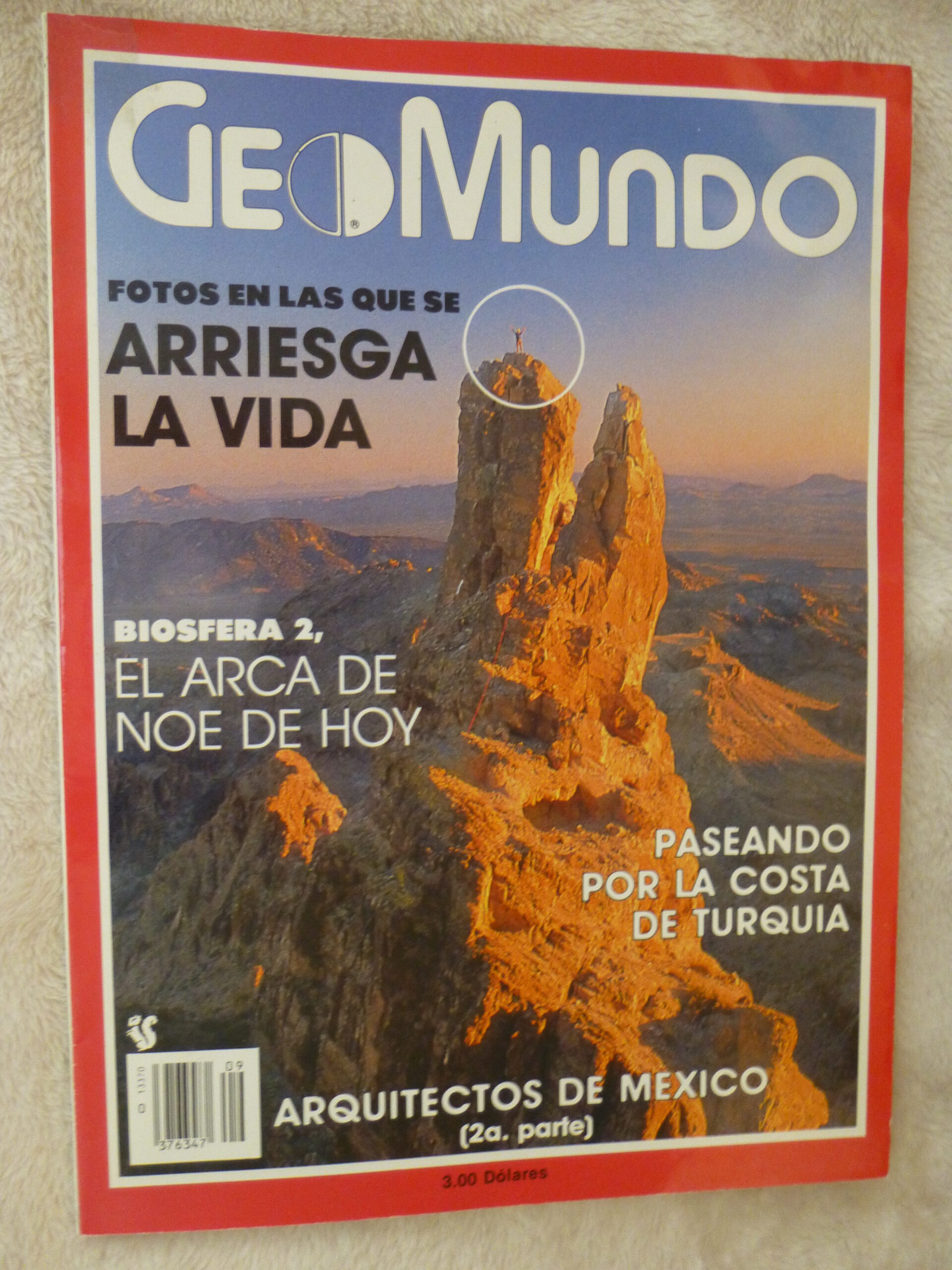Way back in the 1970s, I worked with an organization that had me doing a lot of public speaking. I enjoyed it, and it helped me become a little more comfortable around groups of people. Eventually, I moved away from that area and had no further need to address groups. I also did some writing, and had articles published in the Canadian Alpine Journal in the 1978, 1979 and 1980 issues. When I said I moved away, I really meant it – from Canada all the way to the Unites States. I ended up in Arizona by 1985 and soon realized that I was surrounded by a wealth of mountains just waiting to be climbed.
In 1986, climbing partner Brian Rundle called to tell me about a new guidebook that had just been published, and that I should hustle out and get myself a copy. He was referring to A Guide To Climbing and Hiking in Southwestern British Columbia by the author Bruce Fairley. I went out and bought one, and was surprised to see my name mentioned 26 different times for original climbing I had done in that part of BC, a nice recognition by a man I’d never met, for some hard work putting up new climbs in the area.
Also in 1986, I finished creating a list of the 193 mountain ranges of Arizona, then set out to climb all of their high points. A journalist by the name of Ed Severson who worked for the Arizona Daily Star newspaper somehow got wind of the project and met with me, then wrote a lengthy article about all of it. It was published in his column on July 27, 1989 in the Accent section of the paper.
In 1990, I made 2 trips to South America to attempt Cerro Aconcagua, the highest peak in the Andes. I finally reached the summit on the second trip, and after I’d returned, in early 1991, the Summit Hut, a long-established store selling outdoor gear here in Tucson, wrote a piece called Profile of a Peakbagger about my exploits. That was nice, and a few months later, on April 3 of 1991, the store had me give a slide show – we called it High Altitude Traversing in the Andes. It felt good to stand up in front of an audience again, for the first time in 13 years.
On June 6, 1991 the Arizona Daily Star ran a terrific story about a man named Ed Somers, a fellow who acted as a docent for Saguaro National Park West. It was to honor his 1,000th ascent of Wasson Peak, the high point of the Tucson Mountains. Quite a bunch of us accompanied Ed on that climb, and I, among others, got a nice mention in the story.
I need to backtrack a bit. On November 19th of 1989, a fellow climber led me to the top of Eagletail Peak. We also did a quick climb of the South Feather of the same range. He was a photojournalist and he had me pose atop the Feather with a burning railroad flare in the hope of getting some good pictures. Well, it all worked out and he got one that made him famous. Here are a few places that the photo was seen.
The above photo was also seen on the cover of the Chessler Books catalogue of Christmas 1991, as well as on the cover of the American and World Geographic Publishing catalogue for fall of 1991
That issue was Año XV – No. 9 Septiembre 1991

This was seen on a series of billboards in the Netherlands. The words translate as “You can always just go on holiday.”
In the October 24, 1991 issue of the Arizona Daily Star, they ran a feature article on the photojournalist who had led me to the top of Eagletail Peak (the previous 3 pictures), and in that story they referred back to the climb itself, how we climbed it together and he got his famous photo.
The REI store (Recreational Equipment Inc.) in Tempe, Arizona contacted me, and on November 20, 1991 I gave them a slide show entitled “Mountain Climbing in the Andes”. I don’t recall how they knew to contact me – I know I certainly didn’t approach them. The same thing happened that fall when the Phoenix branch of the Audubon Society contacted me and had me do a slide show for them at their monthly meeting. I have no recollection of what the subject of the slide show was, and how they knew about me and how to contact me. There must be some secret association of the folks who handle presentations for their members or customers, acting behind the scenes and sharing information.
Late in 1991, a book was published with the title “Adventuring in Arizona”. It was a Sierra Club book, and in its 1st edition, on pages 12-14 and 75-76, there were some detailed accounts of some of the adventures I had personally had while climbing in Arizona. But more significantly, the book published my complete list of the 193 mountain ranges of Arizona – this was the first time the list appeared in print.
The Sierra Club had a Tucson chapter. In late 1991, they contacted me and asked if I would give them a slide show. Again, I have no idea how they knew about me or how to contact me (secret association at work again?). I was surprised to see the amount of publicity this talk received – it was advertised in: the Southern Arizona Hiking Club January 1992 newsletter; the Arizona Daily Star of February 7th; Tucson Today; the Tucson Weekly; the Tucson Peace Center bulletin; the Sierra Club winter newsletter; the Canyon Echo; Lo Que Pasa of February 10; the Arizona Daily Wildcat (University of Arizona) of February 13; the Tucson Citizen newspaper of February 7th. It was a lot of publicity for a simple slide show. The slide show went off without a hitch on February 13th, 1992 and was well-attended. The presentation was entitled: “The Endless Chain: Solo Climbs in the Andes, the World’s Longest Mountain Range”.
In the winter issue of Desert Skies appeared an article I wrote entitled “A Good Day in the Cordón del Plata” about a particular day of climbing in a mountain range in Argentina. The climb had been exciting and I really enjoyed conveying that in the article.
In early 1993, the local chapter of the Sierra Club contacted me once again and asked if I would do another presentation at their monthly meeting. I agreed, and they publicized the talk in the Eco Times, the Arizona Daily Star, the Canyon Echo, their own Sierra Club flyer and the Tucson Peace Center bulletin. The slide show took place on April 8th, 1993 and was entitled “Travels Down Under”.
The Sierra Club invited me back a few years later, and on September 19, 1996 I gave them a slide show entitled “Climbing Parinacota” about a climb I did with Brian Rundle in the Andes Mountains in Chile. They did their usual well-thought-out publicity for the talk and it was well-attended.
On May 10th of 1999, the Arizona Daily Star ran a detailed article on the fact that the body of George Mallory had been found high on Mount Everest. He and his climbing partner Andrew Irvine had last been seen only 800 feet below the summit before they disappeared in 1924. Ed Severson of the Star interviewed a number of Tucson climbers to get their opinions as to what the find meant and what might have happened to the pair. I was honored to have been included among those interviewed.
Years passed while I kept up a busy pace of climbing here in the desert. Then, out of the blue, the Summit Hut contacted me after a hiatus of 14 years and asked me to do a slide show for them. I agreed, and they wanted it done twice, once at each of their Tucson stores. I don’t have any record of the date, just that it happened in 2014, and it was entitled “Lesser-Known Peaks”. It dealt with Arizona peaks that would be difficult for the average person to reach, due to remoteness and difficulty of access.
In 2015, the Southern Arizona Hiking Club, or SAHC for short, called me to see if I’d do a slide show for them. I had done one for them way back in the 1990s, but that was so long ago that I didn’t even remember what it was about. I agreed, but I wanted to spice things up a bit, so I said that I’d do it only if it could be about places that the public wasn’t allowed to go (and where, of course, I had personally climbed). We called the show “Forbidden Arizona” and it was a hit with their audience, giving them a peek into very remote areas they’d never personally visit. They loved it.
In the spring of 2015, a woman from the Los Angeles chapter of the Sierra Club, the Desert Peaks Section, called me. Would I be willing to travel to L.A. and speak at their annual meeting? They’d fly me out there, pay for all expenses and even pay me for talking to them. Why not? So in May of that year, I gave them a slide show they’d not soon forget. It was called “Climbing Remote Peaks in the Mountain Ranges of Arizona”. The seemingly-innocuous title hid the fact that it was mostly about stealth climbing in the Arizona desert on military bombing ranges. It made an impression, alright – quite a few of the attendees came up to me afterwards and said things like “You’re crazy” or “You must be out of your mind”. That was exactly the type of reaction I was hoping for, and I deemed the evening a complete success.
2016 arrived, and the SAHC called me back. I agreed to give them another slide show, this time on my years-long project of climbing all of the peaks in Pima County, Arizona. We called the show “The Pima County 740” and people liked it – it gave them an in-depth look at some of our home county’s most interesting peaks, ones they’d normally never get a chance to see.
They must have liked it, because in 2017 they called me back. What could I do for an encore? I didn’t take long to tell them that I’d like to give them a slide show on the subject of stealth climbing. “Hold on there, Baba Looey!” was their response. They didn’t think it would be appropriate for their members to hear about such things. I held my ground, and they relented. I gave the show, one they’d long remember, and people loved it. It must have been okay in the end, because in 2018 they invited me back – I mustn’t have ruffled too many feathers.
In 2018, I toned things down considerably and gave them a talk on climbing the highest point of the193 mountain ranges of Arizona. It went over well, especially when they learned that their very own program director was the 6th and latest (and probably will be the last) person to complete that massive project.
In early 2019 I got a call from a nice lady who was the one who arranged presentations for the Saddlebrooke Ranch Hiking Club. Theirs was an upscale retirement community in the northern part of the Tucson metro area. She asked me if I would give their group a slide show. Sure, no problem. She asked me if I could talk about something like hiking popular trails in the mountains around Tucson. I told her that I didn’t do anything like hike on trails, that I was a peakbagger who always went cross-country to the tops of mountains. She said that their members didn’t do anything like that, and could I maybe put together a slide show more to their liking. “Nope, I don’t even have any pictures of what you’re asking” was my response. I told her that there was only one show I’d give them, one about stealth climbing on military bombing ranges. She was shocked, to put it mildly. When she saw I wasn’t about to change my mind, she reluctantly gave in. Well, the slide show took place in April to a large audience. After their initial shock wore off, they settled in for what turned out to be quite an outrageous show, all about trespassing on to an Air Force bombing range closed to the public. They loved it. There were a few retired military veterans in the audience who liked it so much that they told me afterwards that if I ever needed any help identifying any unexploded ordnance that I found, they were at my disposal. The lady from the club was impressed enough that she took me and my wife Dottie out for drinks afterwards and even wrote me a check for my services, some-thing they normally never did. So it just goes to show you that once in a while it’s okay to step out of your comfort zone.
That was the last slide show I gave. Who knows what the future will bring, but it’s been a lot of fun doing them.


